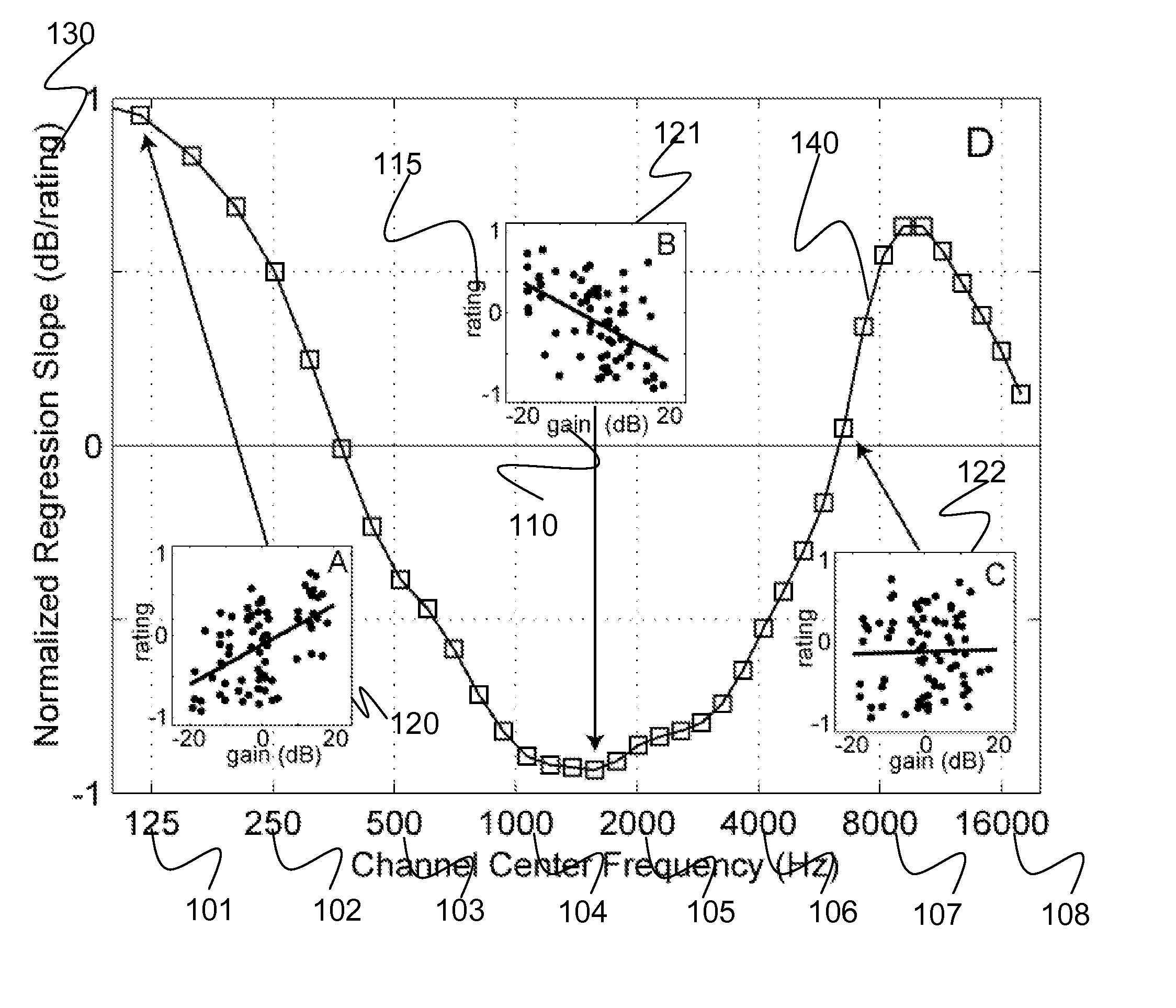Systems, methods, and apparatus for equalization preference learning
a learning system and equalization preference technology, applied in the field of digital audio modification, can solve the problems of reducing the use of tools, reducing the speed of learning, and disassociating potential users from using these tools to their fullest capacity, so as to reduce interactions, improve learning speed, and improve learning
- Summary
- Abstract
- Description
- Claims
- Application Information
AI Technical Summary
Benefits of technology
Problems solved by technology
Method used
Image
Examples
Embodiment Construction
I. Brief Description
[0032]Certain examples provide methods and systems to improve speed and accuracy of learning user preferences for an audio product. For example, systems, methods, and apparatus are provided for equalization preference learning for digital audio modification.
[0033]Potential users of audio tools (e.g., for tasks such as music production, hearing aids, etc.) are often discouraged by the complexity of an interface used to tune the device to produce a desired sound. Pending patent application publication number 2011-0029111, entitled “Systems, Methods, and Apparatus for Equalization Preference Learning,” filed on Jul. 29, 2010, and herein incorporated by reference in its entirety, describes systems and methods to simplify this problem. The systems and methods learn settings by presenting a sequence of sounds to a user and correlating device parameter settings with the user's preference rating. Using this approach, the user rates roughly thirty sounds, for example.
[003...
PUM
 Login to View More
Login to View More Abstract
Description
Claims
Application Information
 Login to View More
Login to View More - R&D
- Intellectual Property
- Life Sciences
- Materials
- Tech Scout
- Unparalleled Data Quality
- Higher Quality Content
- 60% Fewer Hallucinations
Browse by: Latest US Patents, China's latest patents, Technical Efficacy Thesaurus, Application Domain, Technology Topic, Popular Technical Reports.
© 2025 PatSnap. All rights reserved.Legal|Privacy policy|Modern Slavery Act Transparency Statement|Sitemap|About US| Contact US: help@patsnap.com



